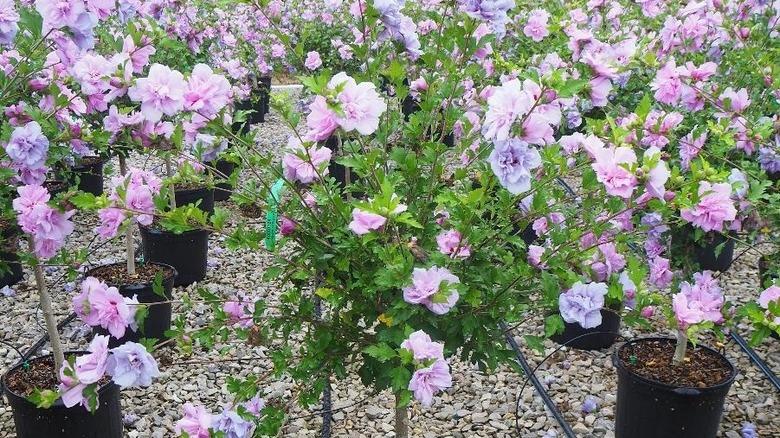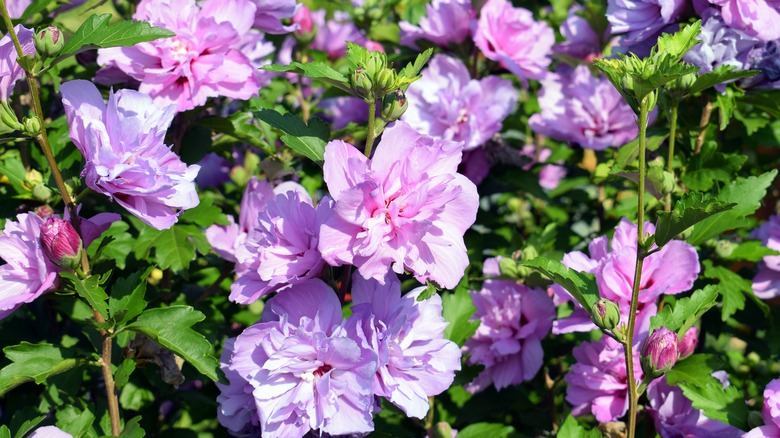The Easy-Growing Tree That's Deer-Resistant And Attracts Pollinators
Looking for a gorgeous small tree that pretty much has it all? The double purple rose of Sharon tree is a variety of the hardy hibiscus plant. Technically a tall shrub, the Sharon can easily be pruned into a small tree. Covered with gorgeous double purple flowers from June until September, this plant is great for late-season color. It is deer-resistant and is loved by hummingbirds, butterflies, and bees.
This stunning tree is also free of most pests and diseases. It thrives in areas with hot summers and it becomes drought tolerant once it's established. This plant can handle salt spray, making it an excellent choice for sunny coastal gardens. It loves full sun but is happy to grow in partial shade, as well. It will reach a height of 8 to 10 feet tall and 5 feet wide. Hardy to Zone 5, this small tree will happily grow in more tropical areas of southern states as well. Few plants are as adaptable as this one.
How double purple rose of Sharon can shine in your landscape
The double purple rose of Sharon can solve many of your biggest challenges in the garden. It makes an amazing focal point in a front yard landscaping design, adding to your curb appeal. If you have trouble getting plants and trees to thrive in your poor soil, this tree is a great solution. It can tolerate a wide range of soil and watering conditions. Consider using it in those far corners and edges of the yard that need color. You can even plant them in containers so that you can grow them on your deck or patio.
Another option for making the most out of this tree is to let it revert to its shrublike form. This simply requires not pruning the trunk for a season or two. Then you can use it as a low-maintenance hedging plant. Can you imagine using this pretty flowering shrub in place of backyard fencing? You can also use it to block an unattractive view or give yourself a little more privacy.
How to grow double purple rose of Sharon
The double purple rose of Sharon tree is super easy to grow. It is a tree that prefers full sun but will tolerate as little as two to six hours of sun per day. This beautiful flowering tree isn't picky about soil quality as long as it is well-drained. It likes averagely moist soil but will deal with drought conditions with occasional deep watering. One application of all-purpose fertilizer in spring is all that is needed for this tough plant.
Pruning should take place in the spring before the plant sets flower buds. Do not prune in the summer or you will reduce the number of blooms. If you wish to prune this shrub into a small tree, first prune any branches on the lower trunk. Then simply cut back the upper tree limbs to the shape and size you prefer. If you grow this as a hedging plant, it needs a little more pruning to produce the largest flowers and maintain its size. In areas with warmer summers, prune every branch back to 12 inches high. In colder hardiness zones, you won't need to prune it back quite that hard.


